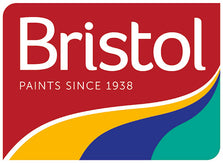
How do I determine the amount of paint I'll need for my project?
Determining the right amount of paint for your project can save you time, money, and avoid unnecessary waste. Here's a step-by-step guide to help you estimate the amount of paint you'll need:
-
Measure the Area:
- For walls, measure the height (in meters) and width (in meters) of each wall. Then, multiply the height by the width to get the square meters (m²). Do this for each wall and then add the total square meters together.
- For ceilings, simply multiply the length of the room (in meters) by the width (in meters).
- For trim or moldings, measure the length (in meters) and multiply it by the approximate width (in meters) to get the area in square meters.
-
Subtract Windows and Doors:
- Measure the width (in meters) and height (in meters) of each door and window. Multiply the height by the width to get the square meters. Then, subtract this total from your overall wall square meters. This step ensures that you're not overestimating the amount of paint.
-
Determine the Coverage:
- Paint cans typically indicate how much coverage you can expect in square meters per liter. This can range from 10 to 15 square meters per liter, depending on the paint's brand and type. Check the paint can label for this information.
-
Calculate the Amount of Paint:
- Divide the total square meters (after subtracting windows and doors) by the coverage rate (in m² per liter). This will give you the number of liters required for one coat of paint.
Total square meters ÷ Coverage per liter = Liters needed for one coat -
Consider the Number of Coats:
- Lighter colors might require more than one coat to achieve good coverage, especially if painting over a darker color. Conversely, when using high-quality paint or when the new color is similar to the old color, you might get away with just one coat. Usually, however, two coats are recommended for a smooth and even finish.
- Multiply the liters needed for one coat by the number of coats you plan to apply.
-
Account for Overage:
- It's a good idea to buy a little more paint than you think you'll need to account for touch-ups, errors, or changes in plans. A general rule of thumb is to increase your total paint estimate by about 10%.
-
Factor in the Type of Surface:
- Rough or textured surfaces will absorb more paint than smooth surfaces. If you're painting a textured surface, you might need up to 20% more paint. On the other hand, a primed or previously painted and smooth surface will likely require less paint.
Once you've calculated the amount, it's better to round up to ensure you have enough paint. Remember, unopened cans of paint can often be returned if you over-purchase, depending on the store's return policy. Alternatively, keep the extra paint for future touch-ups. Make sure to store it in a cool, dry place and seal the can tightly.
